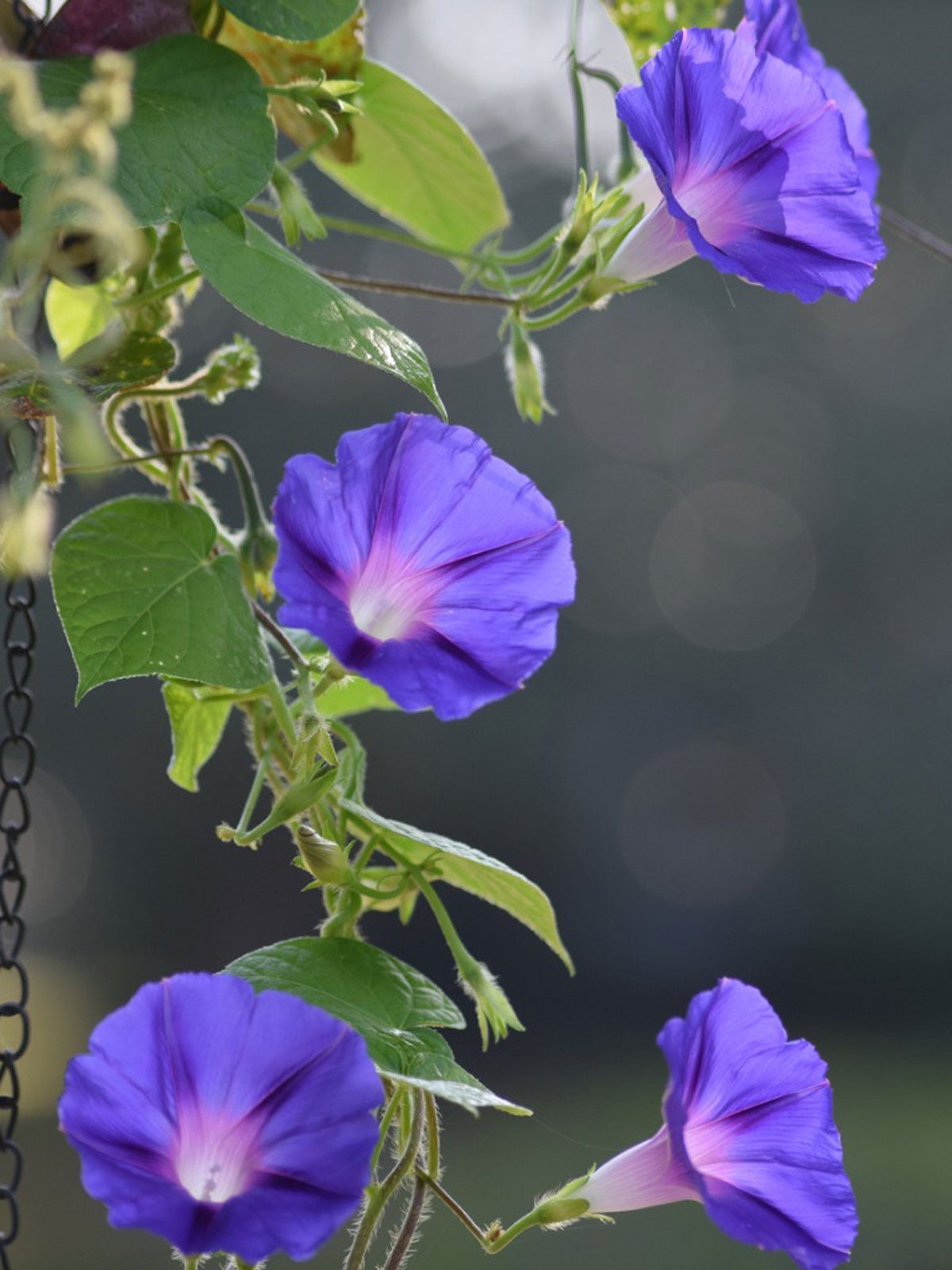Growing Morning Glories From Seed: A Guide To Planting Morning Glory Seeds


Morning glories are annual vining flowers that bloom, as the name suggests, early in the day. These old-fashioned favorites love to climb. Their trumpet-shaped flowers bloom in vibrant shades of purple, blue, red, pink, and white which attract hummingbirds and butterflies. Growing morning glories from seed is fairly easy if you know the trick to ensure quick germination.
Morning Glory Seed Propagation
When starting morning glories from seed, it can take two and a half to three and a half months before they begin blooming. In northern climates where cold winters and shorter growing seasons are the norms, it's best to start morning glories from seed indoors four to six weeks before the last frost date.
When germinating seeds of morning glory, use a file to nick the hard coating of the seeds. Soak them in water overnight. Plant the seeds ¼ inch (6 mm.) deep in fertile soil. This trick helps the seeds take up water and germinate quickly.
Germination time for morning glories averages four to seven days at a temperature of 65 to 85 degrees F. (18-29 C.). Keep the soil moist, but not soggy while germinating. Seeds of morning glory are toxic. Be sure to keep seed packets, seeds that are soaking, and those planted in trays away from children and pets.
Morning glories can also be directly seeded in the ground once the danger of frost has passed, and the ground temperature reaches 65 degrees F. (18 C.). Choose a location that receives full sun, good drainage, and is near a vertical surface for the vines to climb. They do well near fences, railings, trellises, archways, and pergolas.
When planting seeds outside, nick and soak the seeds. Water thoroughly. Once sprouted, thin the seedlings. Space morning glories 6 inches (15 cm.) apart in all directions. Keep the flowerbed watered and weeded until the young plants are established.
Working compost or aged animal manure into the ground before planting morning glory seeds or transplanting seedlings provides nutrients and helps retain soil moisture. A fertilizer designed for flowers can be applied according to the manufacturer's guidelines. Avoid overfertilizing as this can cause leafy vines with few flowers. Mulching will also retain moisture and control weeds.
Sign up for the Gardening Know How newsletter today and receive a free copy of our e-book "How to Grow Delicious Tomatoes".
Although morning glories grow as perennials in USDA hardiness zones 10 and 11, they can be treated as annuals in colder climates. The seeds form in pods and can be collected and saved. Instead of planting morning glory seeds each year, gardeners can let the seeds drop for self-seeding. However, flowering may be later in the season and the seeds can spread morning glories to other areas of the garden. If this becomes problematic, simply deadhead the spent flowers before they have a chance to form seed pods.

Laura Miller has been gardening all her life. Holding a degree in Biology, Nutrition, and Agriculture, Laura's area of expertise is vegetables, herbs, and all things edible. She lives in Ohio.